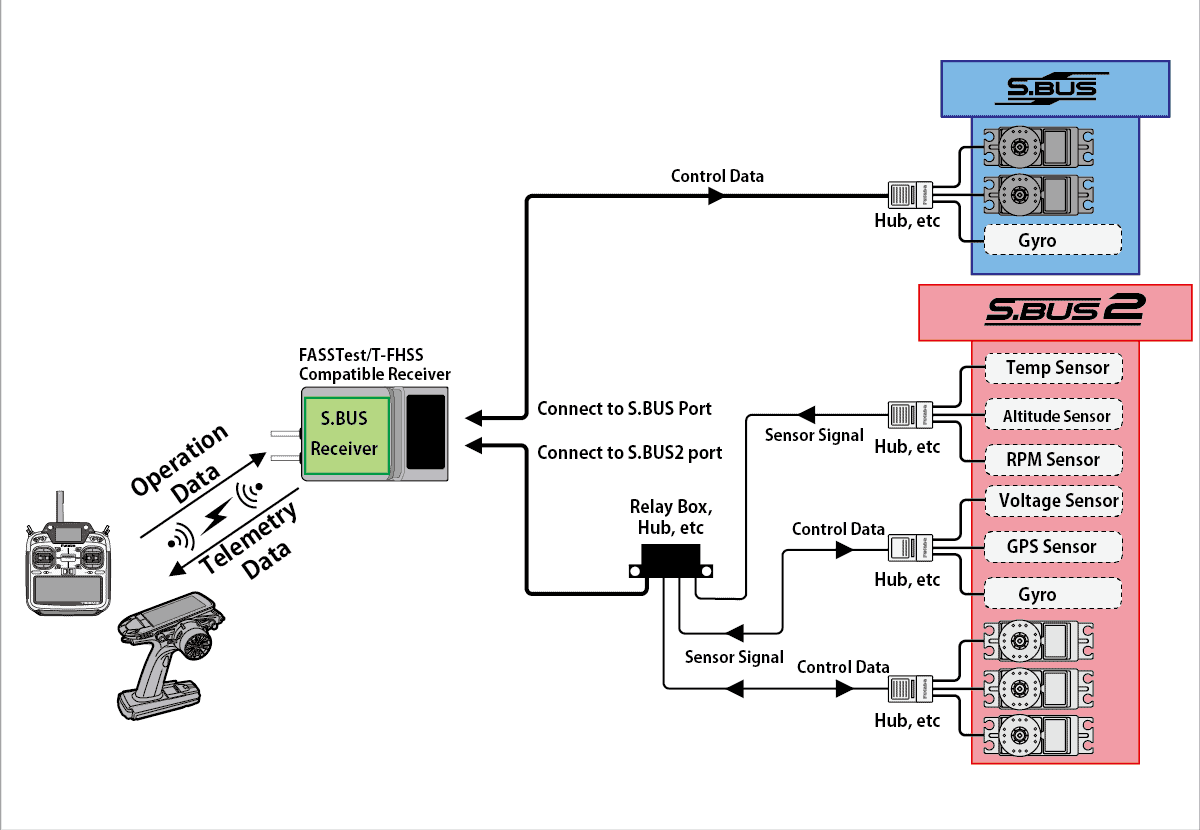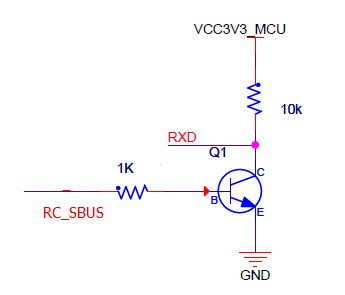The Futaba S.Bus protocol was introduced around 2009. It was developed by Futaba, a leading manufacturer of RC systems, to address the limitations of traditional PWM (Pulse Width Modulation) systems used for RC control.Unlike PWM, which requires separate wires for each channel, S.Bus uses a single serial connection to transmit data for multiple channels, reducing the complexity of wiring in RC models.

Specifications
- Physical Layer
- Message Format
Physical Layer
The physical layer of the Futaba SBus protocol utilizes UART (Universal Asynchronous Receiver-Transmitter) communication at a baud rate of 100000.
Uart Configuration
When it comes to the configuration of the UART communication for SBus, it uses the following format:
- 8 bits of data: Each data frame consists of 8 bits, representing the information being transmitted.
- Even parity: Parity is a form of error-checking used in serial communication. With even parity, the number of bits set to 1 in each 8-bit data frame, including the parity bit itself, must be an even number.
- 2 stop bits: Following the data bits and the parity bit, there are 2 stop bits. Stop bits indicate the end of a data frame and provide timing for the receiving device to process the data.
Inversion
For using SBus with a microcontroller, an inverter is typically required for the inverted UART logic level. This inversion is necessary because traditional UART operates with an active high level, while SBus uses inverted UART with an active low level.

Message Format

The SBus protocol uses a specific message format for transmitting control data from the transmitter to the receiver.
- Byte[0]: SBUS header (0x0F): The message begins with a header byte, which serves as the start indicator for the S.Bus message. This byte is fixed at 0x0F, indicating the beginning of a new S.Bus frame.
- Byte[1 - 22]: 16 servo channels, 11 bits each: Following the header byte, the next 22 bytes are allocated for servo channel data. Each servo channel occupies 11 bits, allowing for precise control over servo positions. This section contains information about the positions of up to 16 servo channels.
- Byte[23]: After the servo channel data, the 23rd byte contains additional status indicators:
- Bit 0: Channel 17
- Bit 1: Channel 18
- Bit 2: Frame lost
- Bit 3: Failsafe activated These bits provide information about the status of channels 17 and 18, as well as indications of frame loss and failsafe activation.
- Byte[24]: SBUS footer (0x00): Finally, the message concludes with a footer byte, marking the end of the S.Bus frame.